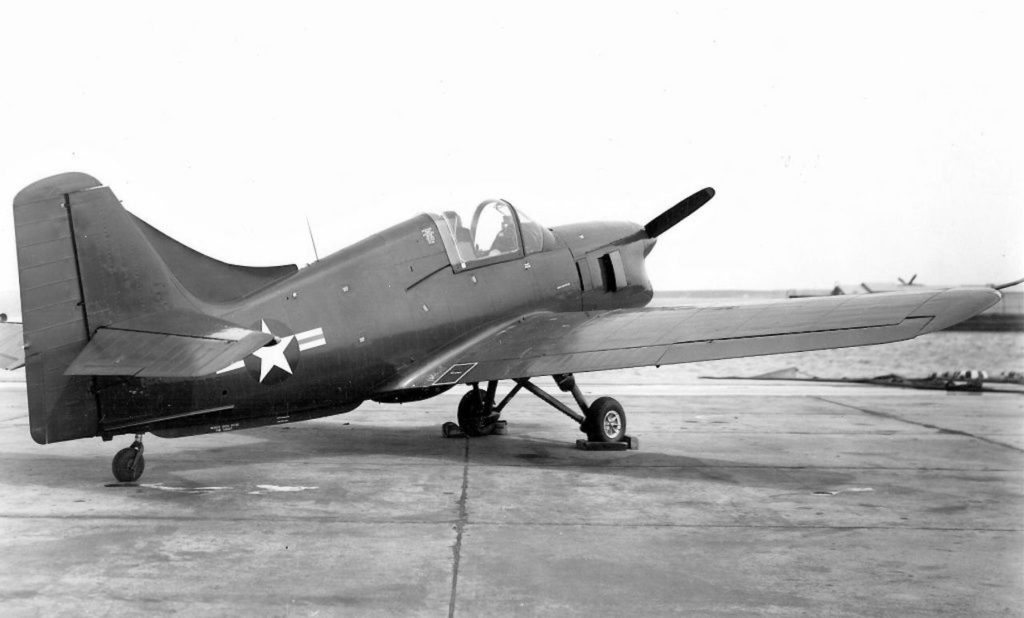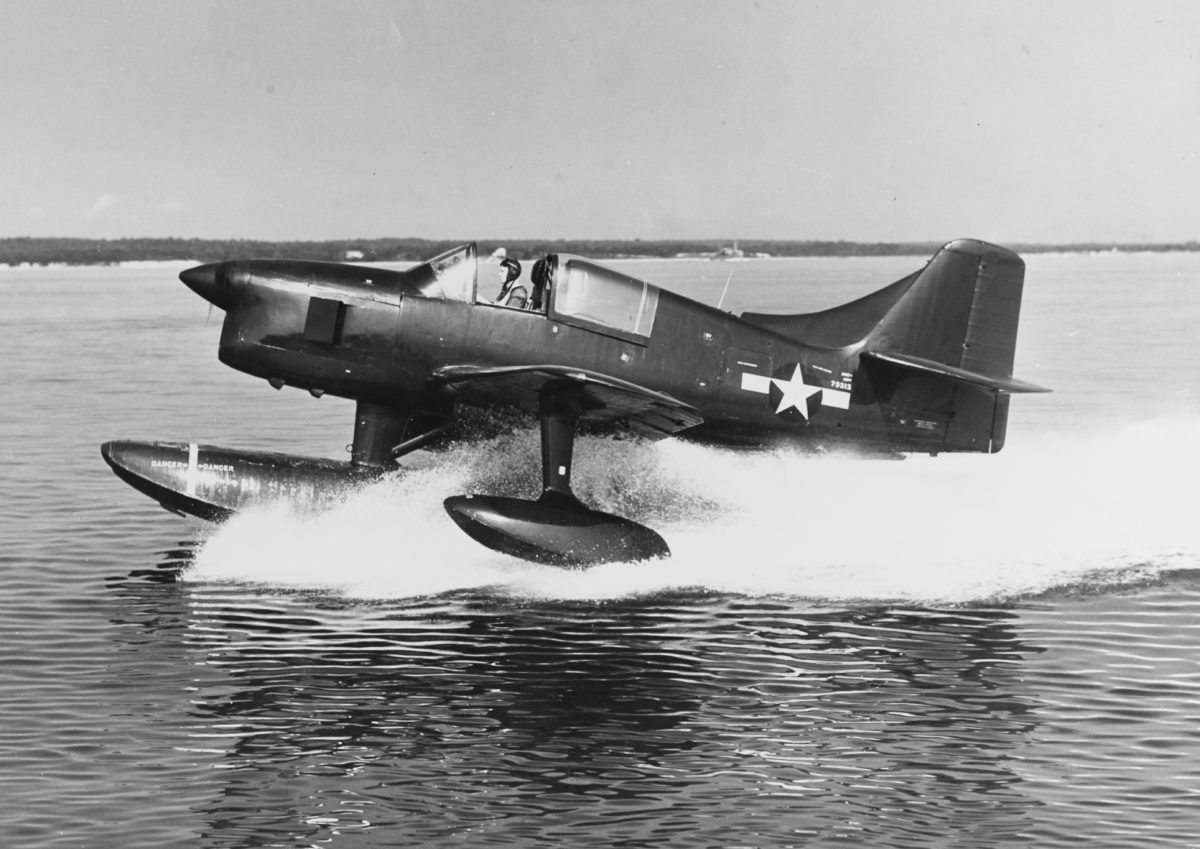The EDO XOSC-1 Navy scout plane
Founded by Earl Dodge Osborn on October 16, 1925, the EDO aircraft Corporation began with a flying boat design, the Model B, which evolved into a one-off flying boat called the Manolo in 1927. What made the company, however, were the aluminum pontoons it developed for floatplanes all over the United States, to which it added other aircraft subassemblies during World War II. Buoyed by that success, EDO set out to design an original single-seat floatplane in 1946, and in that same year two prototype XS2E-1s made their flying debuts. These were later redesignated XOSC-1s and were followed by a modest production batch of eight aircraft.
Intended as a successor to Curtiss’ single-seat SC-1 Seahawk floatplane scout, the OSC was of similar layout—a monoplane with one large float under the fuselage and two fixed stabilizing floats under the cantilever wings—but of quite different proportions. Although a single-seater, the scout was meant to carry out observation, anti-submarine and rescue missions. For the latter, each of its underwing hardpoints were to carry a rescue cell accommodating a single occupant.

The OSC’s wing area was 238 square feet and the span was 38 feet, which could be reduced to 14 feet 6 inches by folding the wings. Length was 31 feet, height 14 feet 11 inches. The OSC weighed 3,973 pounds empty and 6,064 pounds gross. Maximum speed was 198 mph, range 900 miles and ceiling 22,300 feet. Two .50-caliber machine guns were mounted in the wings and it could carry two 350-pound bombs or depth charges.
Whatever the OSC’s virtues, its Achilles’ heel was the power plant selected for it: a 550-hp Ranger V770-8 inverted V-12 water-cooled engine driving a two-bladed Hamilton Standard constant-speed propeller. Built by a subsidiary of the Fairchild Engine and Aircraft Corporation in 1931, the Ranger became notorious throughout World War II for unreliability and a tendency to overheat at low speeds. It had already powered a previous floatplane, the Curtiss SOC-3 Seamew, and was largely responsible for its abandonment. So it was with the EDO OSC, to whose operational problems was added the postwar development of the helicopter, which would soon render all catapult-launched floatplanes obsolete.
EDO reconfigured its basic design on its existent prototypes, including the two-seat XOSC-2 and the XTE-1 and XTE-2 two-seat trainers, but even their small production orders were canceled, leaving EDO with a grand total of 10 floatplanes by 1947. In that same year the faltering company was amalgamated with the Kenmore Aircraft Company, bringing EDO’s pontoon empire to an end.

